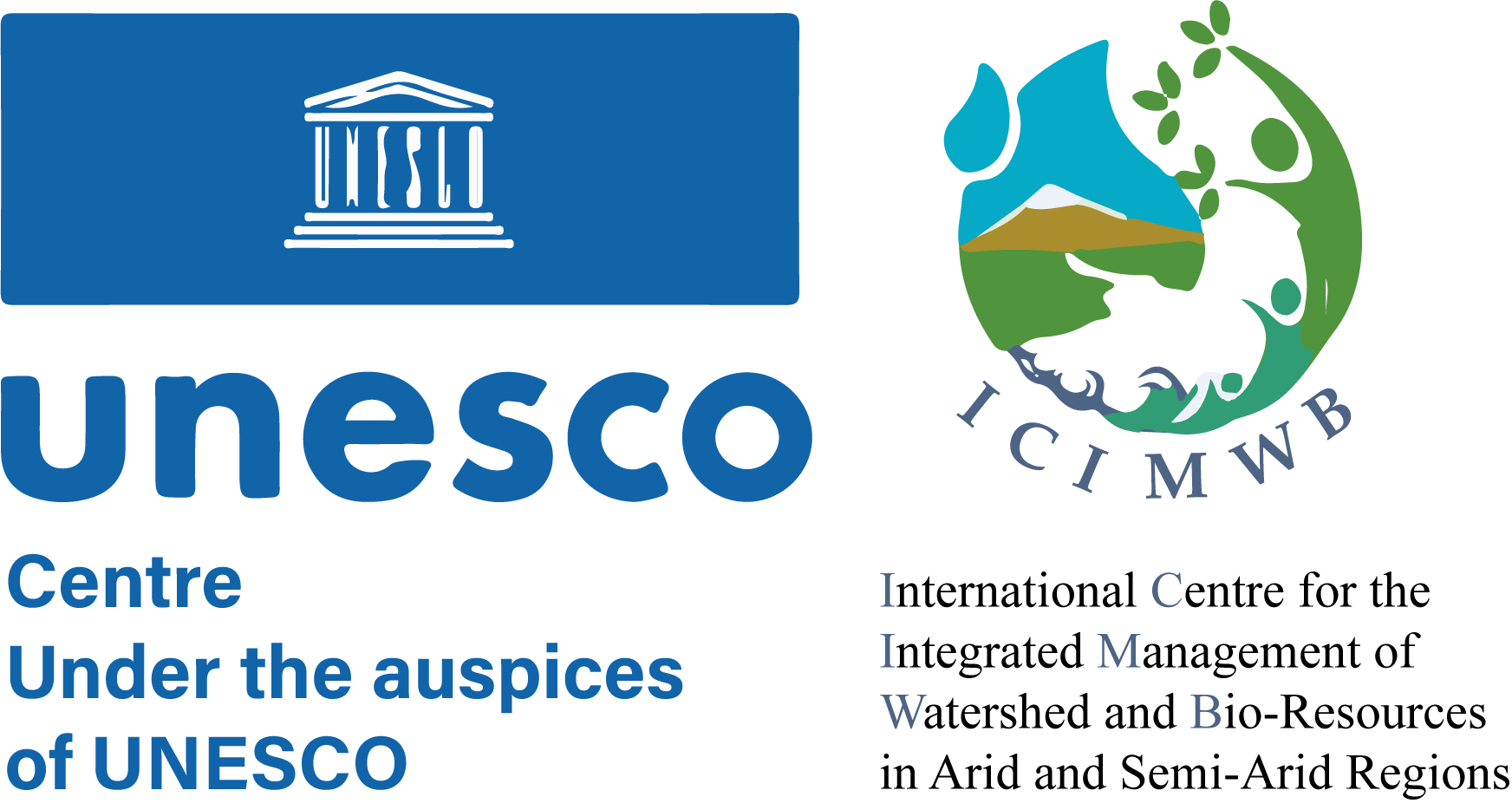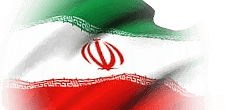







Final Details
Aras UNESCO Global Geopark
2024,01,20
International Literacy Day
2024,01,10
Information Note
2024,01,05
United Nations sustainable development cooperation framework with Iran
2023,09,22
AGREEMENT BETWEEN THE UNITED NATIONS EDUCATIONAL SCIENTIFIC AND CULTURAL ORGANIZATION (UNESCO) AND THE GOVERNMENT OF THE ISLAMIC REPUBLIC OF IRAN
2024,04-20
Water accounting
The key to the sustainability of the country's water security program is water accounting in the form of integrated watershed management and sustainab

Dr. Hamid Nouri, Director of the International Center for Integrated Management of Watersheds and Biological Resources in Arid and Semi-Arid Regions, has sent an article on the subject of water accounting, sustainable management, and water security to the information base of the Natural Resources and Watershed Management Organization of the country, which is presented to the interested readers
The key to the sustainability of the country's water security program is water accounting in the form of integrated watershed management and sustainable management of natural resources
Dr. Hamid Nouri, Director of the International Center for Integrated Management of Watersheds and Biological Resources in Arid and Semi-Arid Regions
The important and necessary question in the country's water management is that considering the crisis of droughts and global warming, can we improve the country's economic, social, and ecological situation with this amount of water and only with proper and efficient planning? And is there any other way for our decision makers?
The answer to this question is only in the integratedmanagement of watersheds and sustainable management of natural resources with the approach of adapting to pressures and changes in ecosystems. Changes that are partly due to climate change and the increase in the frequency and intensity of extreme heat events and the other part is related to the unfavorable structure and methods of water management in the country
Facing these challenges requires two basic attachments in the integrated watershed management plan. The first is a collaborative and need-oriented attachment relying on indigenous knowledge and the responsible presence of people from planning to action and implementation of projects along with strengthening the organizational cohesion of relevant institutions, and the second is a strategic and forward-looking attachment with the attitude of water and food security in the form of a field study and Water and food diplomacy in internal, border and cross-border areas of the country
These two attachments are realized by strengthening the balancing attitude to the factors of healthy water production and its supply and consumption within a watershed. Relying on the continuous monitoring of the health of watersheds, paying attention to the impact of the region's ecology, the help of the ideas and beliefs of resilient local communities, and intelligent planning that is compatible with water shortages, climate change, and global warming, important steps can be taken for accounting Water harvesting in the country. Let's take a look at water efficiency and management, which are keywords in water accounting
The total amount of water resources due to precipitation in the country is 403 billion cubic meters, of which more than 70% is lost through evaporation. The amount of renewable water resources is about 100 billion cubic meters, of which about 70 to 90 percent is consumed in the agricultural sector. In such a situation, one of the effective and practical solutions is to use water optimally and save water. Water consumption management in the agricultural sector, which includes a major part of water consumption in Iran and the world, can be very effective. It is obvious that in order to achieve this goal, it is necessary to identify the main indicators of water consumption management and determine this index in appropriate ways.
Irrigation efficiency, water consumption efficiency, the amount of water consumed in the agricultural sector and modern irrigation methods are among the most important key indicators and basic approaches in macro-planning related to the provision, allocation, and basic consumption of water in different sectors. According to the definition, the physical efficiency of water consumption is the amount of product produced per unit volume of water consumed, which is expressed in kilograms per cubic meter
Today, the productivity in Iran's agricultural sector is not optimal, while the average productivity in developed countries is 2.5 to 3 kg and sometimes much more.
This index was reported between 0.8 and 0.9 kg / m3 at the beginning of the fourth development program. In the 20-year vision program, this index has become 1.6 kilograms per cubic meter. The trend of changes in the water productivity index indicates its growth during the last decade and reached from 0.87 kg / m3 in 1384 to 1.23 kg / m3 in 1394, and various studies show that in the past years, probably It has exceeded 1.5 kg / m3 per year. Sometimes things like water quality, environmental aspects, production and market risk, processing, and even social, economic, and political issues, cause management decisions to be made according to the conditions
Sometimes it is possible to improve water productivity by modifying the fertilizer and nutrition program, changing cultivars, improving crop management, planting time, controlling weeds, and fighting pests and diseases without reducing the amount of water used.
Also, the implementation of the water consumption reduction program by understanding the physiological behavior of plants, understanding the non-useful uses and taking measures to control them, correcting optimal agricultural operations such as correcting the date of planting, changing the method of cultivation, and correcting irrigation methods can increase productivity.
Necessary measures to reduce waste, such as adjusting tools and equipment, correcting harvesting time, proper packaging, creating processing units and creating a chain of production to consumption, can be indirectly effective in improving productivity. At a glance, in order to improve the efficiency of water consumption, it is necessary to pay sufficient attention to the improvement of the existing situation for the two main components of efficiency, i.e. the amount of water consumed and the amount of production per unit amount of water consumed
In a general view, it is necessary to modify the following items in the form of integrated watershed management and increase agricultural health to achieve food security and water security: The pattern of water consumption in the agricultural sector, special and special attention to the mechanization of surface irrigation methods, attention to environmental issues and the principle of water and soil resource sustainability and integrated management of watersheds in the development of various surface and pressurized irrigation methods, water consumption management with the approach Reducing useless uses of applied water, paying attention to racial and agricultural issues with the approach of reducing water consumption, developing tillage and conservation agriculture, compiling and implementing a monitoring program and reducing evaporation in order to reduce useless uses, reducing product waste in different stages of the production process, harvesting, transfer and distribution, packaging, storage, use of greenhouse capacities in agricultural production and water and energy management, determination and analysis of water efficiency index from water supply, transfer, distribution, consumption and post-use, improvement of water efficiency by explaining the structure of relationships Water, soil, plant, atmosphere, human, technology and market
On the other hand, water accounting requires a suitable and facilitating legal structure in government programs. As one of the important issues of the country, water security is one of the priorities of the sixth plan, and today it has been given special attention in the seventh plan from articles 124 to 145
Although the need to pay attention to comprehensive water management with the alignment of the programs of all relevant institutions, especially in the governance of natural resources, is one of the main needs to strengthen this program. The forbidden plains and damaged aquifers of the country also need strategic plans for protection and nutrition
In the topic of reducing the use of underground water resources and the plan to balance underground water by 11 billion cubic meters per year, consumption reduction should be applied, if natural resources and watershed management programs are implemented in the form of integrated management of watersheds, the efficiency of the ongoing projects will increase and In the water catchment program, it is strengthened favorably.
Among the programs that are strengthened by accompanying watershed projects in the Natural Resources and Watershed Organization and are understood in the form of sustainable management of natural resources and water accounting, the following can be mentioned: crucifying unauthorized wells, revising Exploitation licenses for existing wells, artificial feeding, installation of volumetric and intelligent water meters, creation and establishment of inspection groups.
The increase in population in recent years in the world and the new patterns of life and water consumption in the health and agriculture sectors make attention to water production in natural resources and water accounting even more important than consumption patterns in the country's development plans.
If attention to water production and the cost of integrated watershed and aquifer management measures and programs and intelligent security of water in the ground aquifers in the 7th Development Plan are formulated and strengthened in a more strategic and efficient way, without a doubt a favorable approach to balance the structure of the economy and accounting. Water is provided.
On the other hand, global warming and climate change is a global challenge that does not have the same consequences in different regions of the world. According to the 6th Report of the United Nations, Iran is located in the high-risk areas of Central Asia, and especially thermal stress, heat waves, and droughts lead the people of these areas to integrated management that is compatible with the conditions and challenges of water and food security.
Today, as a result of climate change, an increase in temperature and rate of evaporation, and 10% decrease in rainfall in the country, the country's renewable water has decreased. In this regard, the inappropriate structure of the economy, water accounting, and lack of valuation of ecosystem services related to water in the sustainable management of natural resources should be considered as a serious weakness for adapting to this change and intensifying environmental pressure
Food security in the shadow of the traditional exploitation system and in the form of smart and sustainable agricultural systems should be applied in the model of sustainable modern water management in the country from the water governance model to the watershed governance model and from water production to consumption.
Unsustainable governance in all sectors of natural resources, agriculture, and the environment is an important challenge that will reduce the damage to water security and at the same time food security with coherent, interconnected, and synergistic programs. Today, even self-sufficiency in agricultural products is defined in the form of integrated management plans and in the form of strategic plans for water security and food security.
Therefore, continuous calculation and monitoring of the health and determination of the threshold of the resilience of the country's ecosystems and watersheds and reduction of unnecessary and non-economic consumption with structural and non-structural and biological methods and joint management of supply and demand, education and empowerment of people and participation of stakeholders and stakeholders, make the country's water management stable
While promoting water efficiency, we must compile a comprehensive map of adaptation to climate change within the ecosystem services map of natural resourcesand by revising the laws and structures of the country's water organizations, especially in the 7th development plan, and increasing the role of natural resources and watershed management, let's take a more sustainable way and approach to achieve the well-being and biological security of local communities
is important in the country's future approaches and strategic plans for the integrated management of watersheds with the aim of sustainability of natural and agricultural resources is to fill the role of "research", "intelligence", "technology", "education and empowerment", "promotion of findings in social networks" and " consciouslyparticipation"
To achieve food and water security and "improving the effectiveness of findings in planning", sustainability of resources and "improving the indicators of science production and knowledge management within an inclusive, integrated strategic plan with the participation of all stakeholders is necessary
In this case, we can make more and better-quality water available to local communities and people's sustainable livelihood with the approach of water accounting in the ecosystem, especially in the agricultural sector, and the continuity of water production in the country's pastures and forests
![]() ارسال به دوست
ارسال به دوست
The Second specialized workshop of the series of Integrated watershed management and bio-resources 1403/8/6
The first session from a series of specialized sessions 1403/8/6
The inaugural session of the series of specialized workshops 1403/8/6
معرفی اولین پارک تغییر اقلیم یونسکو با همکاری دانشگاه تهران 1403/8/6
جلسات بررسی اسناد راهبردی و مطالعات مدیریت جامع حوزه آبخیز طی دو هفته کاری در تیرماه جهت تصویب طرحهای معاونت آبخیزداری و مرکز بینالمللی مدیریت جامع 1403/5/2
Development of scientific, research, and executive cooperation 1403/4/12
The specialized meeting of the Institute of Natural Disasters with the presence of the center's representative 1403/4/6
Opening and closing speeches of Governing board head 1403/2/30
Deputy President of WASWAC was elected as councilor of Governors of ICIMWB 1403/2/29
Preparing the preparations for the first meeting of the Governing Board of the Instegrated management of watershed and Bio-resource 1403/1/28
Dr. Hamid Nouri, the Director of the International Center for Integrated Watershed Management and Bio-resources, along with his colleagues, had a meet 1402/11/10
Farhad Razavi said in the integrated watershed management meeting: Considering the country's approach, we need to pay attention to integrated manageme 1402/11/10
The people-oriented participation of the Director of the International Center of Integrated Management in the national meeting of teachers in the f 1402/11/10
Report of the director of the International Center of Integrated Management mission on his trip to Bushehr province and participation in the governor' 1402/11/10
Natural Resources and Watershed Management Organization Mountaineers conquered Sablan Peak 1402/11/10
On Sunday and Monday, June 25 and 26, a synergistic training workshop was held for the supreme governance of the land 1402/11/10
A two-day meeting of deputy watershed managers of regions 2 and 3 of the country was held 1402/11/10
Specialized meeting of data governance in the field of water, environment, and natural resources 1402/11/10
The key to the sustainability of the country's water security program is water accounting in the form of integrated watershed management and sustainab 1402/3/28
Iran won fourth place in the world in the registration of agricultural heritage systems of the FAO organization known as (GIAHS). 1402/4/20